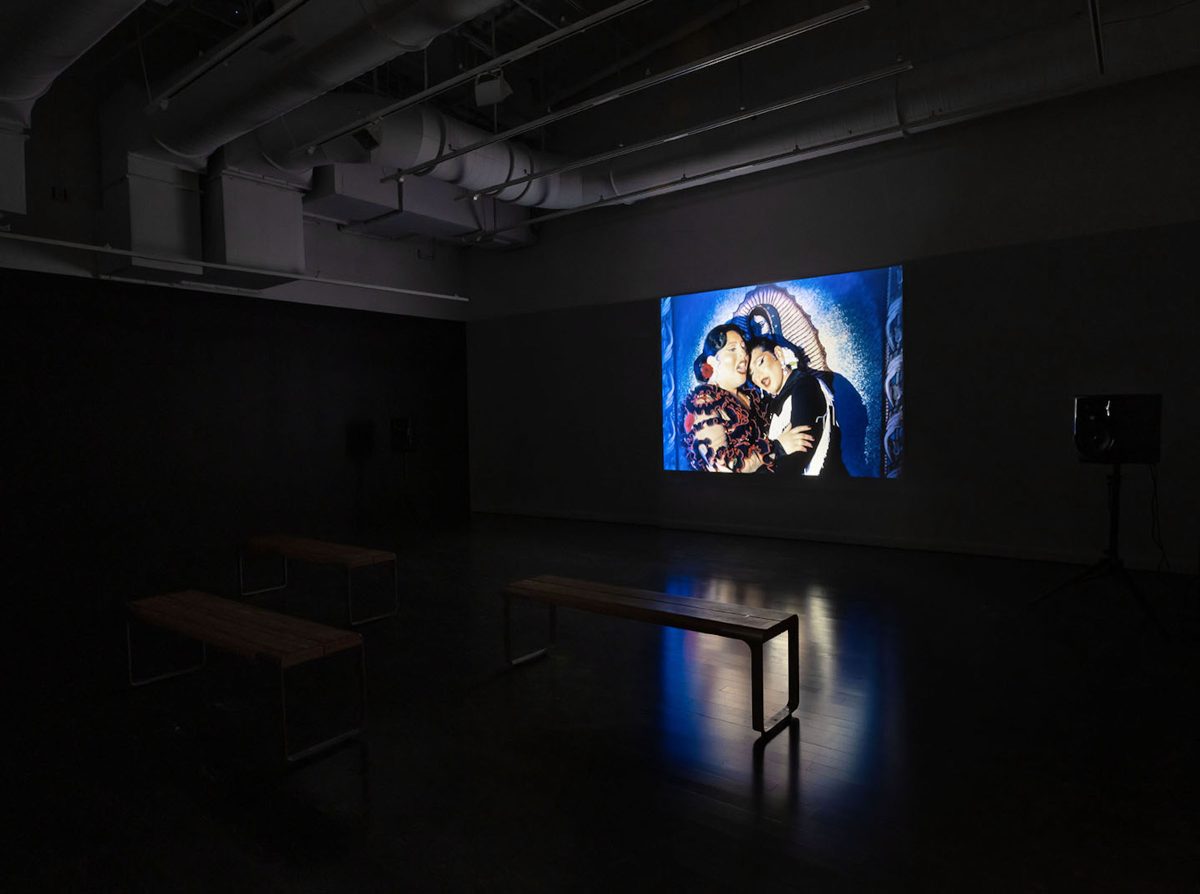
In 1979, the Museum of Modern Art hosted a small exhibition titled “Sound Art” that helped define the burgeoning medium. Broadly speaking it comprised anything aural — spoken word, installation, and even silence itself — that featured sound as both its medium and subject. Nearly fifty years later, Sonic Terrains in Latinx Art at Vincent Price Art Museum (VPAM) is expanding the canon and positioning sound as a potent medium to explore a much wider range of subjects, from racialization and identity, to migration and belonging, to nature and healing.

Near the front of the gallery, a monitor displays a traditionally clad Mariachi troupe performing Guillermo Galindo’s “Juan Jaula Cage Variations II” — a take on John Cage’s amorphous score from the previous millennium. Galindo’s adaptation (an homage to his Mexican homeland) takes on new significance as it illuminates the stereotypes and assumptions of the Mariachi as entertainer. While early sound artworks by the likes of John Cage were a shocking departure from the canon of Western art that privileged vision over other senses, the work of Galindo and other exhibiting artists propel the medium forward, moving past formalist points about art’s hierarchies to address the relevance of sonic experience to various social phenomena such as race and identity.

Many works on view are overtly political. A video piece titled “Returning a Sound” from artists Guillermo Calzadilla and Jennifer Allora follows a figure on a moped around the satellite island of Vieques, Puerto Rico. The video shows a trumpet attached to the muffler, producing a loud droning meant to recall and replace the familiar sound of exploding bombs heard around Vieques for nearly 60 years during the island’s use as a US military testing ground. As the moped sputters along, the viewer’s awareness drifts to the landscape, the street signage, and the stoic motorcyclist. Entranced by the steady rumble of the trumpet, the viewer is left to contemplate the island and its history. Nearby, a recording shows Ambos Project artists striking the US-Mexico border wall like a percussive instrument in “96 Deaths” (2017) — a performance honoring the lives of those who have died due to militarization at the Southern Arizona border. Repetitive sound in both of these works allows the viewer to enter a contemplative state in which they can reflect upon these oppressive histories.

Elsewhere in the exhibition, artists Autumn Chacon and Penelope Uribe-Albee employ radio as a site for protest. The former utilizes pirate-radio to undermine state occupation of land and airwaves, and the latter’s “Distant Lover” (2016) considers the abolitionist legacy of Los Angeles DJ Art Laboe (known for coining the term “oldies but goodies”) who would field song requests for inmates from loved ones on the outside.

These artists interpret “sound art” in myriad ways, but each of them harnesses the power of sonic experience to hold attention and elicit reflection. Unlike the MoMA’s 1979 exhibition which could only accommodate one artwork at a time, the galleries at VPAM host a soft cacophony of works across nearly every media imaginable. Sounds vie for your attention as they slowly ooze from various displays around the room. In many ways the exhibition is an exercise in “deep listening”: a concept theorized by experimental musician Pauline Oliveros (whose legacy anchors the exhibition) referring to the selective action, as opposed to passive hearing, that cultivates heightened awareness of one’s environment. Presenting a history of Latinx sound practices steeped in resistance, Sonic Terrains in Latinx Art lays clear that the phenomenology — and the efficacy — of sound comprises much more than aural experience.

Sonic Terrains in Latinx Art continues at the Vincent Price Art Museum (VPAM) (1301 Avenida Cesar Chavez, Monterey Park, Los Angeles) through July 30. The exhibition was co-curated by Javier Arellano Vences, Pilar Tompkins Rivas, and Joseph Daniel Valencia.
0 Commentaires